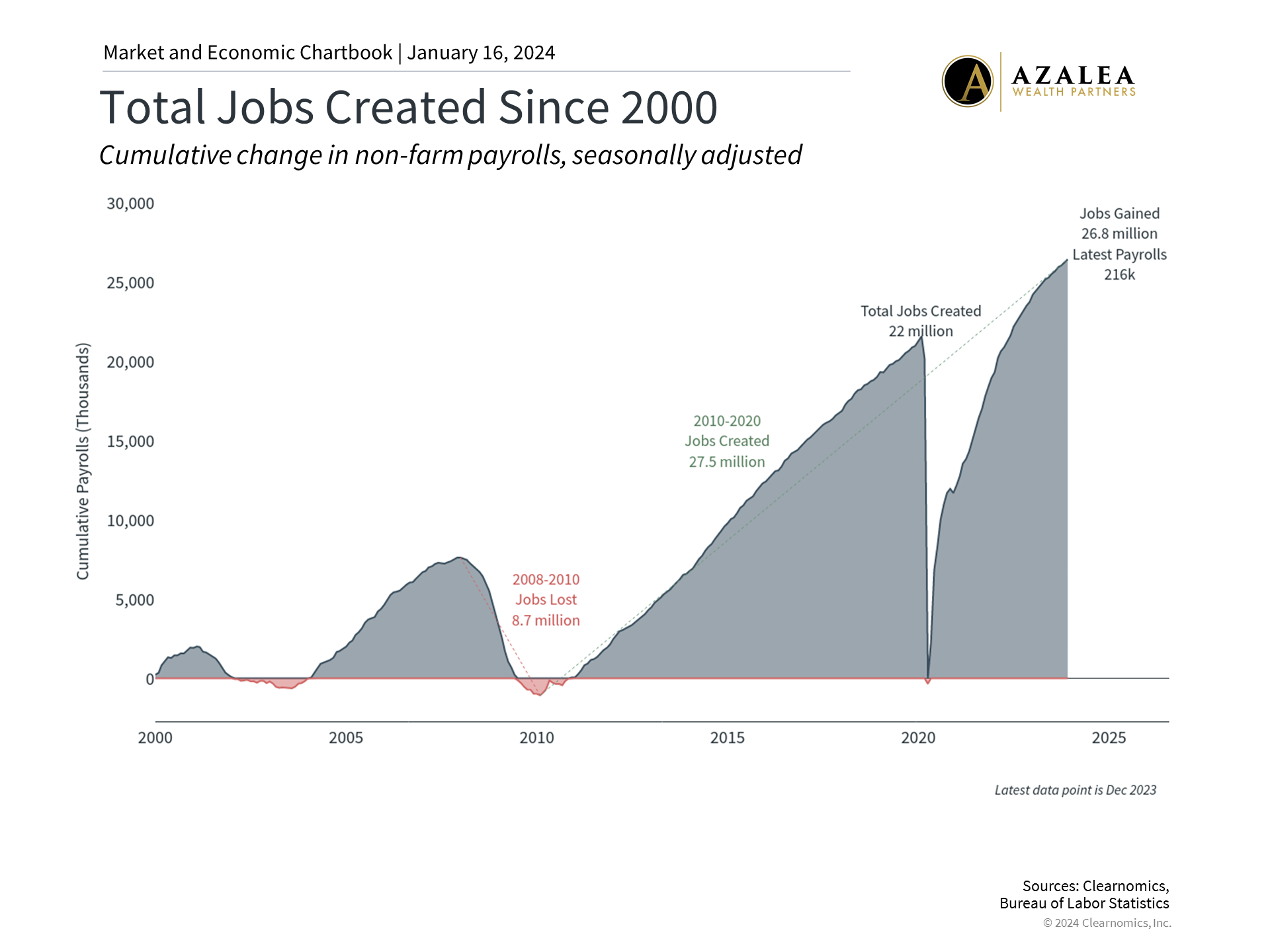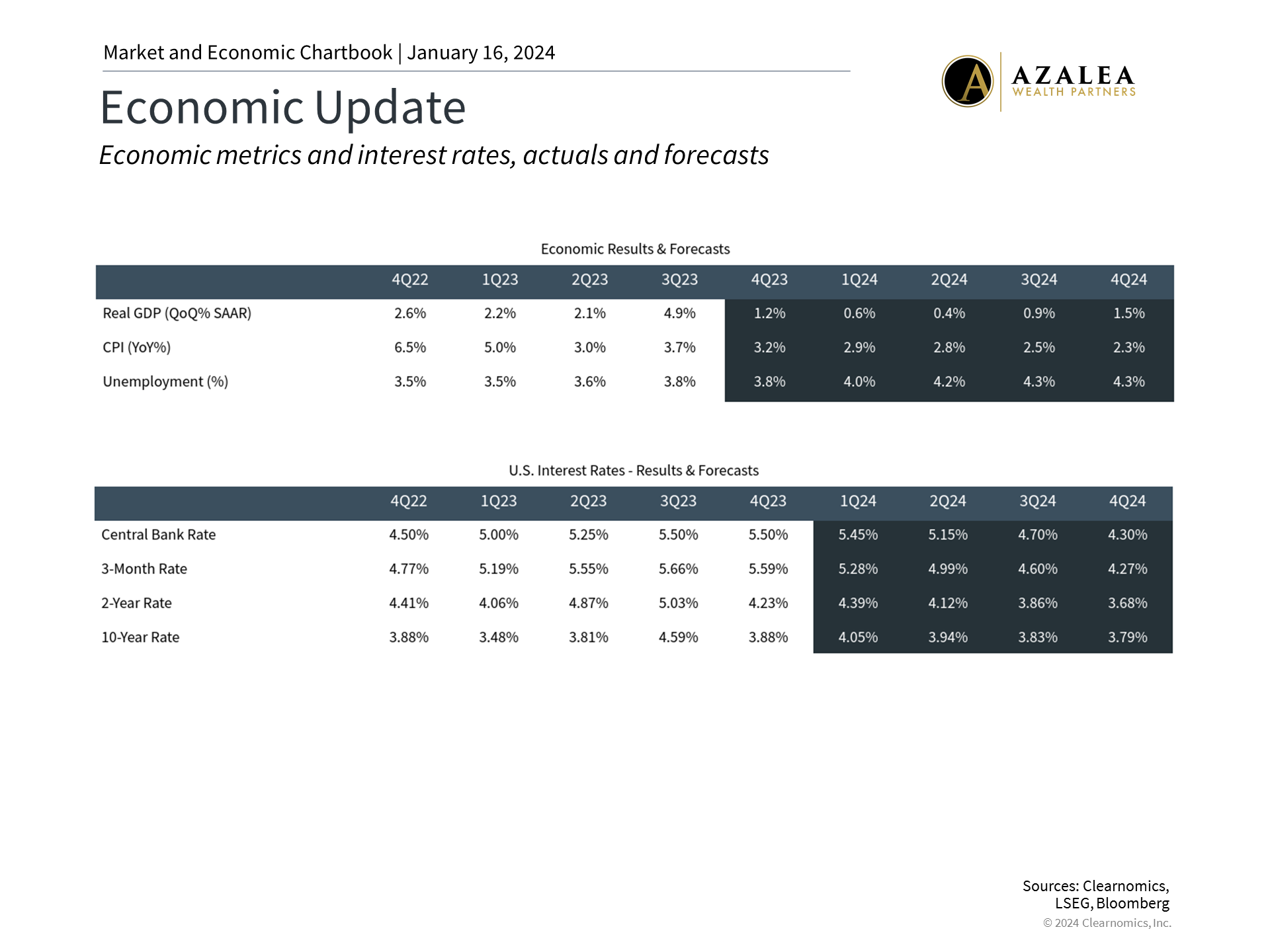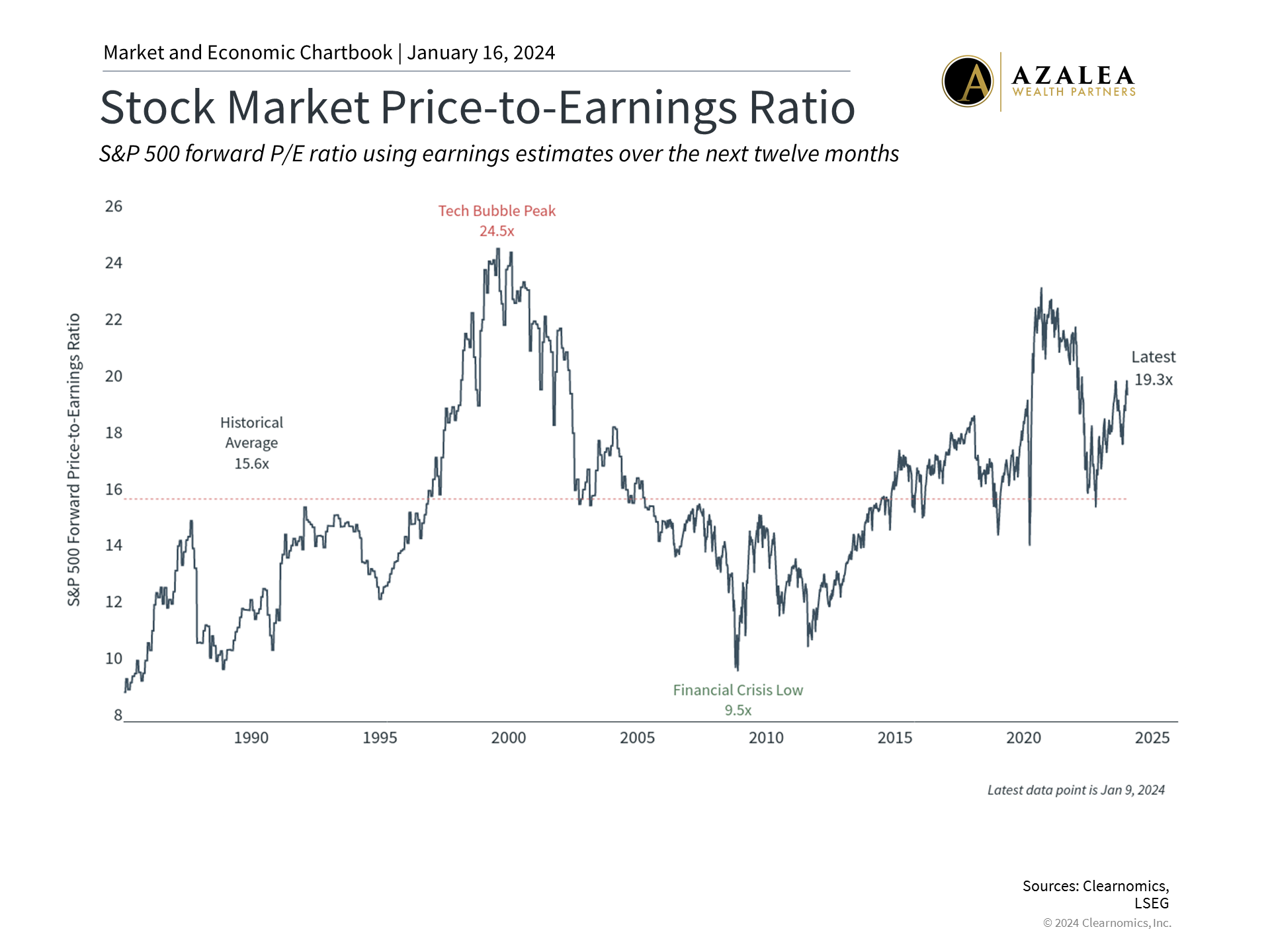
Why Investors Need Perspective on the Soft Landing Debate
Stock and bond markets have struggled during the first trading weeks of 2024 as investors questioned the probability of a "soft landing" and what it may mean for the timing and size of Fed rate cuts later this year. Market-based measures still suggest that the Fed could cut rates by 25 basis points five or six times this year, beginning in May and possibly as early as March, although the Fed recently signaled a slower pace than what many investors had initially hoped for. So, while investors might prefer to start the year off on a positive note, it's important to not overreact to a single week of activity, especially in the context of the strong trends of the past twelve months. What should investors consider today to maintain a longer-term perspective on markets and the economy?
The economy added 2.7 million new jobs last year
First, it's important to define what a soft landing entails. The Federal Reserve's Congressional mandates since 1977 have been to maintain stable prices (i.e., keep inflation low) and achieve maximum employment (i.e., keep the economy strong). From 2008 following the global financial crisis to early 2020, inflation was exceptionally low, allowing the Fed to keep policy rates near zero for much of that decade. The inflation spike of the past few years reversed this trend for the first time since the early 1980s, resulting in one of the fastest rate hike cycles in history. Since rising rates tend to slow the economy, the Fed's challenge has been to tighten policy in a way that slows inflation without causing a deep recession.
The possibility of a soft landing entered the conversation last year as the economy remained robust even as inflation fell. The Fed has traditionally maintained a 2% inflation target on the Personal Consumption Expenditures Price Index, a measure of inflation, and these figures have now decelerated to 2.6% and 3.2% on the headline and core measures, respectively. Absent any major shocks to the economy, energy prices, or rents, these figures could be on track to reach 2% on a year-over-year basis later this year. Recent month-over-month numbers have been significantly lower with the latest figures showing a decline in prices.
Recent jobs data also showed that the labor market has slowed but remains historically strong. Unemployment was steady at only 3.7%, and 216,000 new jobs were added in December, although there were also 71,000 in downward revisions to the prior two months. Still, this means that 2.7 million new jobs were created in 2023, an strong pace that adds to the cumulative job gains shown in the chart above.
The economy is expected to slow but few expect a deep recession this year
These small steps forward in inflation and the strength of the economy are not necessarily what most economists anticipated just a year ago, serving as a reminder to take forecasts with a grain of salt and a dose of humility. Markets climbed back to near where they were in 2021, and the Fed paused its rate hikes and signaled future rate cuts. One possibility is that just as the bear market in 2022 was defined by the spike in inflation and rapid rate increases, markets could be defined by a reversal in these trends over the next couple years.
Of course, things never go as smoothly as investors would like. Another possibility is that the economy could slow in 2024 after avoiding a recession last year. The accompanying chart shows that economists anticipate a deceleration in GDP growth during the first three quarters of the year. This could happen as consumers tighten their belts and the impact of high rates continues to filter through the economy. Of course, the irony is that a slowing economy would further justify Fed rate cuts, which is generally positive for both stocks and bonds. A third possibility is that the last mile of inflation could be difficult to navigate, especially among categories that are notoriously "sticky."
Valuations have risen as stock prices have priced in positive trends
All of this matters to investors not because small changes in inflation or the difference between one or two rate cuts will dramatically alter the path of the economy or monetary policy. Instead, it's because markets have "priced in" quite a lot over the past few months. The S&P 500 price-to-earnings ratio, for instance, has climbed to 19.8x, well above recent lows and the historical average. Much of last year's market gains were in anticipation of positive events, pushing valuations higher until fundamentals such as corporate profits can eventually catch up.
Thus, investors need to maintain perspective in this environment. When professional investors and portfolio managers debate whether inflation will be stuck at 3% on a year-over-year basis or whether the Fed will begin cutting rates in March or May, this can cause short-term market swings. However, for long-term investors, this amounts to splitting hairs since they don't affect the overall trajectory of the market and economic trends. While investors should always expect the unexpected, debating on a daily basis whether or not the Fed will cut three, five or seven times this year loses sight of the bigger picture.
The bottom line? Investors should continue to focus on the trends that emerged last year as the economic and market situation unfolds in 2024. Interest rates are likely to remain higher for longer, and long-term investors should take this into account in their allocations.
Copyright (c) 2024 Clearnomics, Inc. All rights reserved. The information contained herein has been obtained from sources believed to be reliable, but is not necessarily complete and its accuracy cannot be guaranteed. No representation or warranty, express or implied, is made as to the fairness, accuracy, completeness, or correctness of the information and opinions contained herein. The views and the other information provided are subject to change without notice. All reports posted on or via www.clearnomics.com or any affiliated websites, applications, or services are issued without regard to the specific investment objectives, financial situation, or particular needs of any specific recipient and are not to be construed as a solicitation or an offer to buy or sell any securities or related financial instruments. Past performance is not necessarily a guide to future results. Company fundamentals and earnings may be mentioned occasionally, but should not be construed as a recommendation to buy, sell, or hold the company's stock. Predictions, forecasts, and estimates for any and all markets should not be construed as recommendations to buy, sell, or hold any security--including mutual funds, futures contracts, and exchange traded funds, or any similar instruments. The text, images, and other materials contained or displayed in this report are proprietary to Clearnomics, Inc. and constitute valuable intellectual property. All unauthorized reproduction or other use of material from Clearnomics, Inc. shall be deemed willful infringement(s) of this copyright and other proprietary and intellectual property rights, including but not limited to, rights of privacy. Clearnomics, Inc. expressly reserves all rights in connection with its intellectual property, including without limitation the right to block the transfer of its products and services and/or to track usage thereof, through electronic tracking technology, and all other lawful means, now known or hereafter devised. Clearnomics, Inc. reserves the right, without further notice, to pursue to the fullest extent allowed by the law any and all criminal and civil remedies for the violation of its rights.



